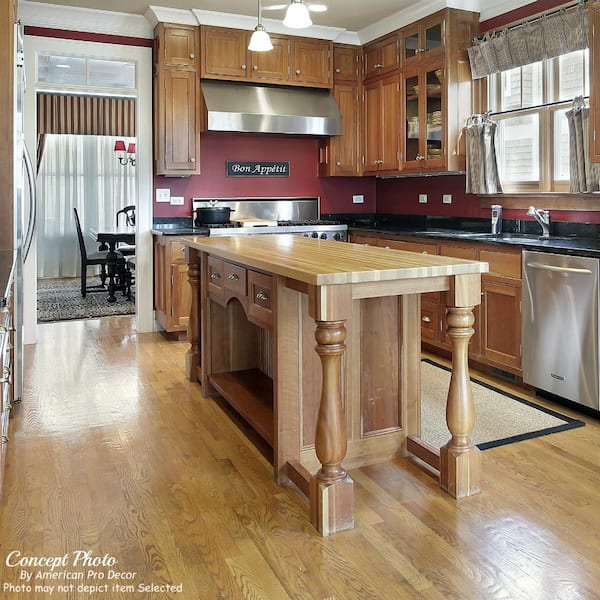Reinvent Your Kitchen's Look with Distinct Legs For Kitchen Island Accessories
Reinvent Your Kitchen's Look with Distinct Legs For Kitchen Island Accessories
Blog Article
Important Elements to Consider When Selecting Legs For Cooking Area Island
Choosing the appropriate legs for a kitchen area island involves a cautious analysis of several variables that can considerably affect both functionality and visual allure. As we explore these components, it becomes clear that each decision can have far-ranging implications for the general cooking area experience.
Material Options
When choosing legs for a cooking area island, understanding the different product alternatives is important for attaining both visual appeal and architectural honesty (Legs For Kitchen Island). The choice of material substantially affects not just the resilience of the island but additionally its overall design and performance
Steel legs, frequently made from stainless steel or wrought iron, contribute a commercial and modern-day feeling while making sure toughness and security. These materials are resistant to wear and can sustain significant weight, making them perfect for bigger islands.
Another alternative is engineered products, like MDF or plywood, which can be extra cost-efficient while still offering an array of surfaces. Nevertheless, they might not offer the very same degree of security as solid wood or steel. Materials such as acrylic or glass can develop a contemporary look, though they might require added assistance to ensure security.
Eventually, the selection of product for kitchen area island legs should straighten with the desired capability and the general theme of the kitchen area.
Design And Style

When thinking about style, the shape and finish of the legs are vital. Tapered legs can supply a sense of lightness and beauty, while thicker, much more robust legs can communicate stamina and stability. Additionally, the finish-- be it painted, tarnished, or all-natural-- need to enhance the kitchen cabinetry and counter top materials to produce a unified look.
Moreover, the design of the legs can additionally mirror individual taste. Customized or decorative legs, such as those including detailed makings or special geometric shapes, can serve as prime focus, including character and personality to the cooking area. Inevitably, the ideal selection will certainly not only boost capability however also boost the visual appeal, making the kitchen island a standout attribute of the home.
Height Considerations
Picking the suitable elevation for kitchen island legs is important, as it straight affects both capability and comfort. The common elevation for a kitchen area island commonly ranges from 36 to 42 inches, lining up with usual countertop elevations.

It is also necessary to make up individuals' elevations and preferences. Customizing the elevation can guarantee a comfy experience for all member of the family, making the cooking area island a much more enjoyable and useful area.
Weight Assistance
Making sure adequate weight assistance for kitchen island legs is essential for both safety and capability. The kitchen area island usually serves numerous functions, consisting of cooking, eating, and additional storage space, necessitating a robust assistance structure. When picking legs, it is critical to think about the total weight capacity needed based upon the island's intended usage and the products that will be put on it.
The selection of material for the legs plays a substantial role in their weight-bearing abilities. Strong timber, metal, and durable more helpful hints compounds generally offer premium strength compared to lighter products. In addition, the design of the legs-- whether they are straight, tapered, or have a pedestal type-- can affect their ability to distribute weight successfully throughout the framework.
Constantly seek advice from the maker's requirements pertaining to lots restrictions to make sure that the legs can maintain the designated weight without jeopardizing safety. In summary, picking cooking area island legs with ample weight assistance is necessary for developing a functional and safe cooking room.
Setup and Maintenance
Proper installment and upkeep of kitchen area island legs are crucial for ensuring long life and security. To begin, it is important to adhere to the maker's guidelines during installment. This commonly involves safeguarding the legs to the space station utilizing appropriate bolts, making sure that the legs are level and straightened. Making use of a degree tool can help stop wobbling and boost the general visual charm of the cooking area island.
Once mounted, regular click for more info maintenance is essential to protect the honesty and appearance of the legs - Legs For Kitchen Island. click to find out more For wood legs, routine cleaning with a wet cloth and application of appropriate timber polish can avoid dampness damage and preserve their coating. Metal legs might call for a gentle cleaning option to remove grease and gunk, adhered to by a completely dry fabric to protect against corrosion formation
In addition, evaluate the legs routinely for indications of wear or damages, such as fractures or loosened joints. Tightening up screws or screws as required can likewise prolong the life expectancy of the legs. By adhering to these setup and upkeep practices, home owners can guarantee that their cooking area island continues to be sturdy and visually appealing for many years to find.
Verdict

Aesthetic coherence is vital in picking the design and design of legs for a kitchen island, as these aspects substantially affect the overall ambiance of the space. Tapered legs can supply a feeling of lightness and sophistication, while thicker, extra durable legs can share toughness and security.Choosing the appropriate height for kitchen island legs is important, as it directly affects both performance and comfort. In summary, choosing kitchen area island legs with sufficient weight support is vital for producing a risk-free and practical culinary space.
In conclusion, selecting legs for a cooking area island demands mindful factor to consider of different aspects, including material options, style, elevation, weight assistance, and setup.
Report this page